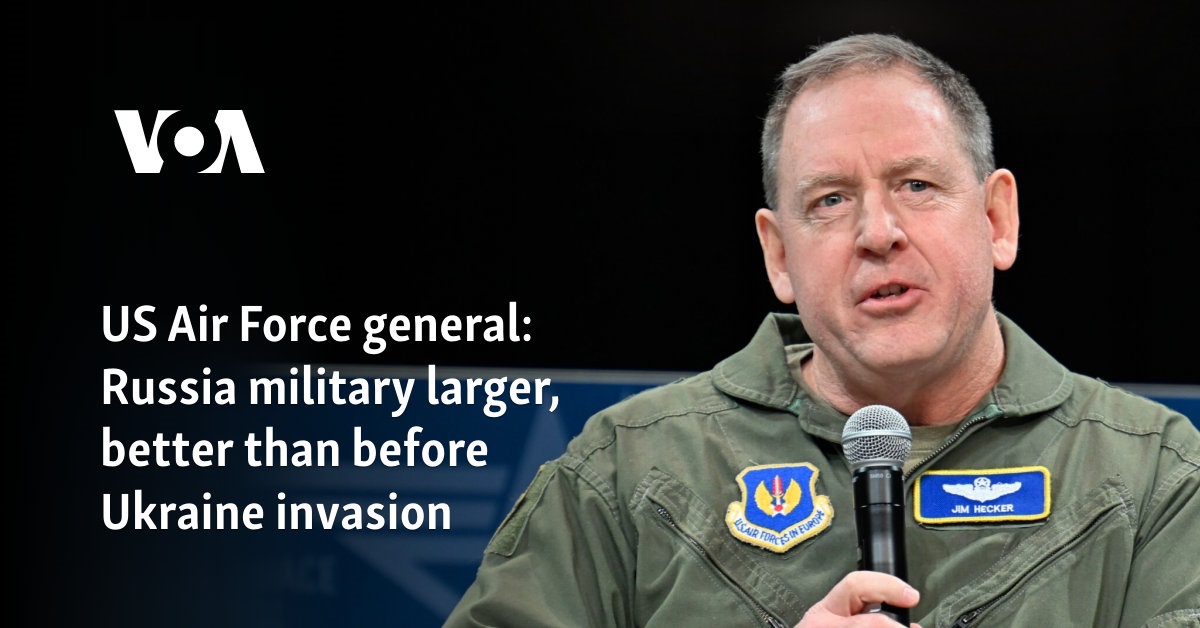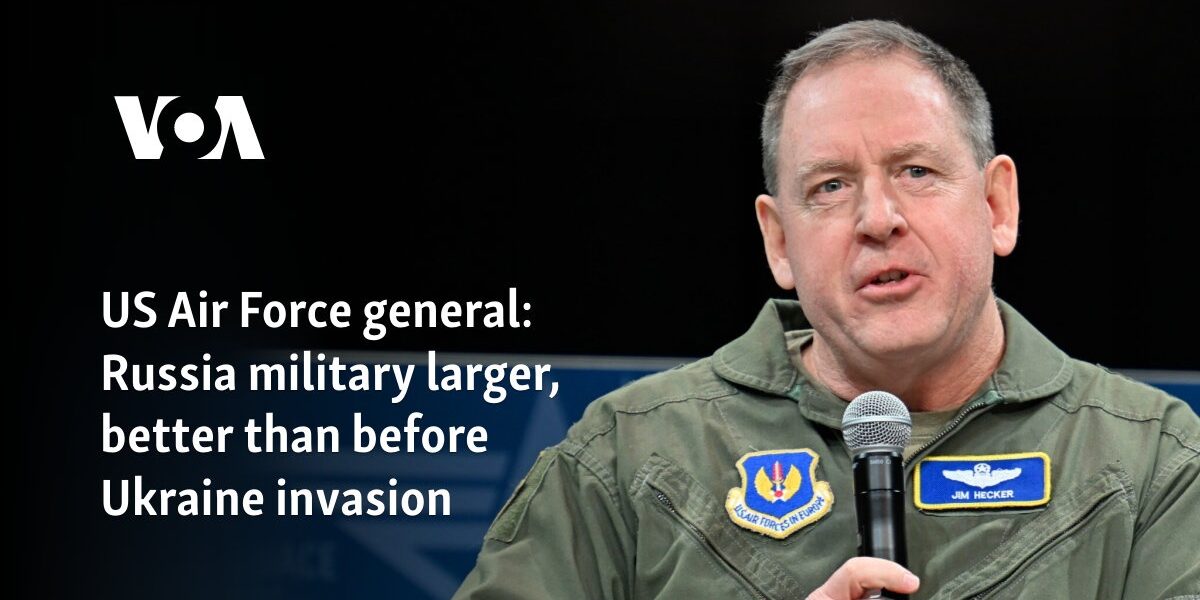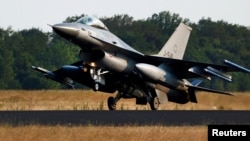
PENTAGON —
Russia’s military is bigger and stronger than it was prior to invading Ukraine in February 2022, the commander of United States Air Forces in Europe and Africa cautioned Tuesday.
“Russia is getting larger, and they’re getting better than they were before. … They are actually larger than they were when [the invasion] kicked off,” Air Force General James Hecker told reporters at the Air & Space Forces Association’s annual Air, Space & Cyber Conference.
The improvements come despite heavy casualties inflicted by Ukraine. U.S. Secretary of Defense Lloyd Austin has estimated that since 2022, more than 350,000 Russian troops have been killed or wounded.
“The rates of casualties that they’re experiencing are staggering,” Pentagon press secretary Major General Pat Ryder told reporters Tuesday in response to a question from VOA.
On Monday, Russian President Vladimir Putin ordered that the Russian army grow by 180,000 active-duty troops for a total of 1.5 million soldiers, making Russia’s military the second largest in the world, behind China’s.
“Russia is going to be something that we’re going to have to deal with for a long time, no matter how this thing ends,” Hecker said.
However, William Pomeranz, a senior scholar at the Kennan Institute, told VOA that “this move suggests that Vladimir Putin is losing the war.”
“This is an open signal from Vladimir Putin that his army and his military is in trouble and doesn’t have the resources to maintain troops in the field,” Pomeranz said.
Despite Russian improvements on the battlefield, Ukraine has continued to put chinks in Russia’s armor, shooting down more than 100 Russian aircraft since Moscow began its full-scale invasion, which amounts to dozens more aircraft than Russia has been able to down on the Ukrainian side, according to General Hecker.
“So what we see is the aircraft are kind of staying on their own side of the line, if you will, and when that happens, you have a war like we’re seeing today, with massive attrition, cities just being demolished, a lot of civilian casualties,” he said.
To gain even the slightest advantages in a war where no clear side dominates the skies, Ukraine has turned to low-cost solutions that also appeal to the U.S. military.
“We have to get on the right side of the cost curve with this. Taking down $10,000, $15,000, $20,000 one-way UAVs [drones] with $1 million missiles, we just can’t afford to do that in the long-term,” the general told reporters.
General Chance Saltzman, the chief of the U.S. Space Force, announced Tuesday that a Space Force pilot program that uses commercial satellite imagery and related analytics to create more situational awareness for military leaders has proven very cost-effective when compared with traditional intelligence, surveillance and reconnaissance collection via U.S. MQ-9 drones, which are expensive and limited in number.
AFRICOM was able to use the $40 million Tactical Surveillance, Reconnaissance and Tracking Program to maintain situational awareness during the full withdrawal of U.S. forces from two air bases in Niger in July and August. The drawback, however, was that instead of real-time situational awareness, the data took one to four hours to get to the security team.
“Not as good as real time, right? With MQ-9 that you would have, but it’s better than nothing, right?” Hecker said.
Hecker also said the U.S. was looking into more cost-effective ways to sense incoming threats around bases, including methods like Ukraine’s Sky Fortress system that uses thousands of inexpensive sensors to identify aerial threats. He says the technology has been demonstrated in Romania and other countries.
Source: voanews.com




